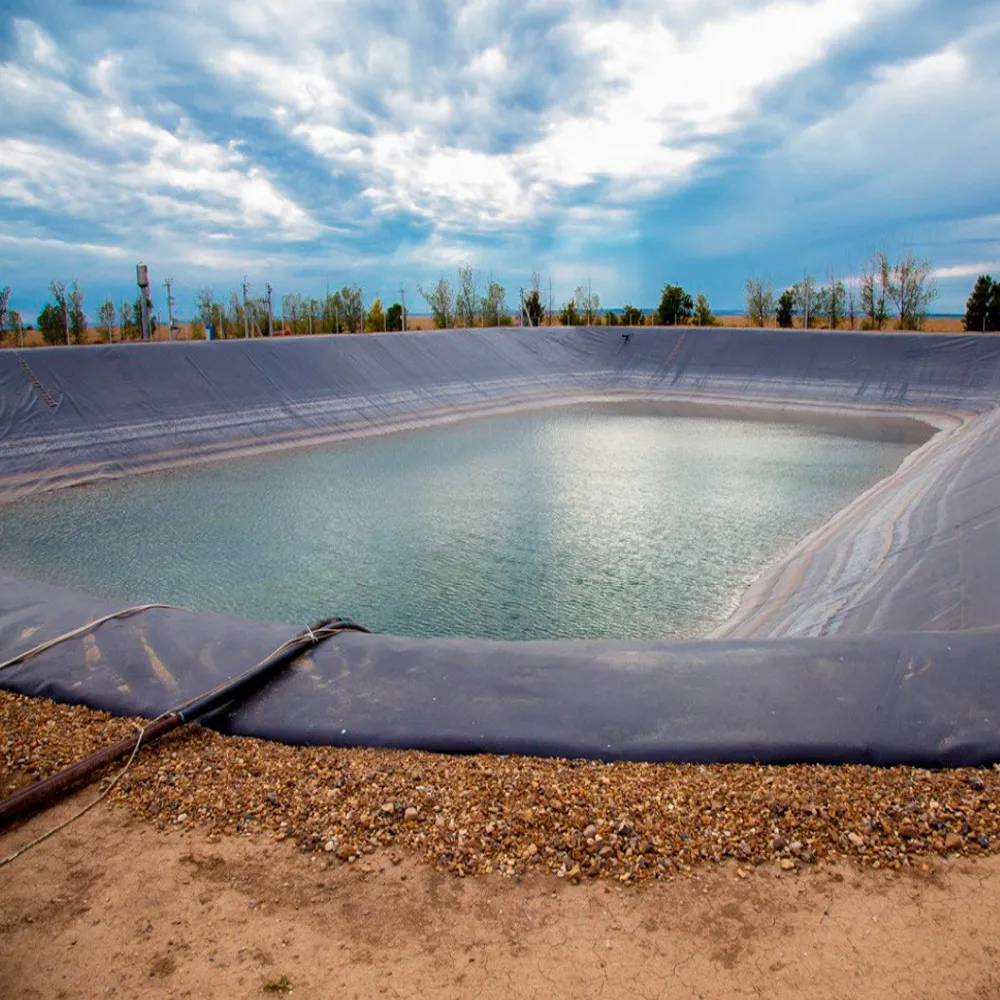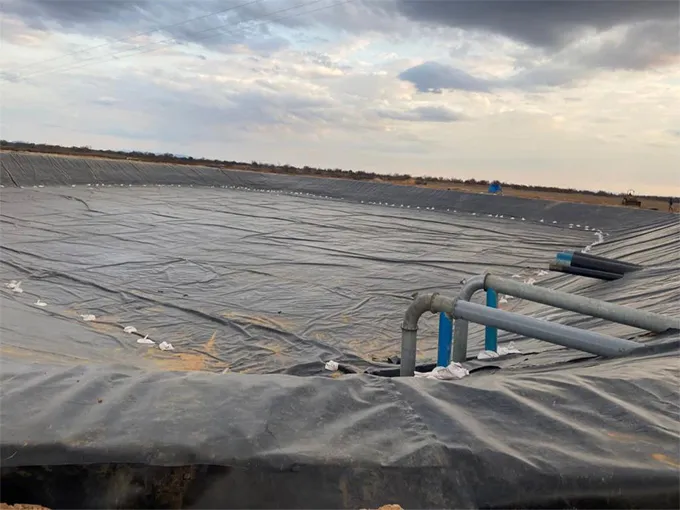When it comes to aquaculture and agricultural water management, selecting the right pond liner geomembrane is crucial. The choice of geomembrane not only affects the efficiency of your water containment system but also impacts the environment and the health of your aquatic life. Whether you're managing a large outdoor pond or a small backyard water feature, understanding the different materials and their properties is essential. This guide will help you navigate the key factors to consider when choosing an agriculture pond liner geomembrane.

Key Considerations for Selecting a Pond Liner Geomembrane
1. Pond Design and Usage
The design and intended use of your pond play a significant role in determining the type of geomembrane you need. For instance, large outdoor ponds used for fish farming may require a more durable and puncture-resistant material compared to small decorative ponds. Consider the following:
Size and Depth: Larger and deeper ponds may need thicker geomembranes to withstand water pressure.
Water Type: Saltwater ponds may require materials with higher chemical resistance.
2. Material Properties
Different geomembrane materials offer varying levels of performance in terms of durability, flexibility, and resistance to environmental factors. Here are some common materials used in agriculture pond liners:
HDPE (High-Density Polyethylene): Widely used in aquaculture due to its long lifespan and non-toxic nature. HDPE is cost-effective and performs well in standard water temperatures. However, it requires on-site welding, which can be a drawback for some users.
LLDPE (Linear Low-Density Polyethylene): Similar in price to HDPE but more flexible and easier to install. LLDPE has fewer wrinkles during installation and a lower risk of stress cracking. However, it is less durable than HDPE and has weaker resistance to UV rays and chemicals.
PVC (Polyvinyl Chloride): Known for its flexibility and chemical resistance, PVC is easy to install but can degrade under UV exposure, requiring more maintenance.
EPDM (Ethylene Propylene Diene Monomer): Offers excellent flexibility and UV resistance, making it suitable for various weather conditions. Although more expensive, EPDM is a durable option for long-term use.
3. Thickness and Color
The thickness of the geomembrane is a critical factor in its performance and longevity. Common thicknesses range from 0.3 mm to 1.0 mm, with 0.5 mm and 0.75 mm being popular choices. Thicker liners are generally more durable and resistant to punctures.
Color: Black geomembranes are the most common due to their superior UV resistance, which helps in prolonging the liner's life. However, other colors like blue or white can be custom-made for specific aesthetic or functional requirements.
4. Environmental and Durability Factors
The environmental conditions where the pond is located will influence the choice of geomembrane. Consider the following:
Temperature Stability: Ensure the material can withstand the temperature fluctuations in your region.
UV Resistance: For outdoor ponds, UV resistance is crucial to prevent degradation over time.
Chemical Resistance: If the pond will contain chemicals or saltwater, choose a material that can resist corrosion and chemical damage.
5. Cost and Installation
While geomembranes are generally more cost-effective than traditional concrete or clay liners, the total cost will depend on the material, thickness, and installation requirements. HDPE, for example, is affordable but may require professional installation due to the need for welding.
Installation: Most geomembranes are relatively easy to install, whether for small garden ponds or large aquaculture farms. Proper installation is key to ensuring the liner's effectiveness and longevity.
6. Supplier and Certification
Choosing a reliable supplier is as important as selecting the right material. Look for suppliers with certifications like CE and ISO, which indicate compliance with international standards. A reputable supplier will offer high-quality products and provide technical support for installation and maintenance.

Why Choose the Right Geomembrane?
Selecting the appropriate agriculture pond liner geomembrane is not just about cost; it's about ensuring the sustainability and efficiency of your water management system. A high-quality geomembrane will:
Prevent Water Leakage: Ensuring efficient water use and reducing the need for frequent refilling.
Protect Aquatic Life: Non-toxic materials ensure the health and safety of fish and other aquatic organisms.
Enhance Durability: A well-chosen geomembrane will last longer, reducing the need for replacements and maintenance.
Conclusion
Choosing the right agriculture pond liner geomembrane involves a careful evaluation of your specific needs, environmental conditions, and budget. By considering factors like material properties, thickness, color, and supplier reliability, you can ensure that your pond remains efficient, durable, and environmentally friendly. Whether you opt for HDPE, LLDPE, or another material, the right choice will contribute to the long-term success of your aquaculture or agricultural project.
By making an informed decision, you not only protect your investment but also contribute to sustainable water management practices. So, take the time to research and choose the best geomembrane for your agriculture pond—it’s a decision that will pay off in the long run.


